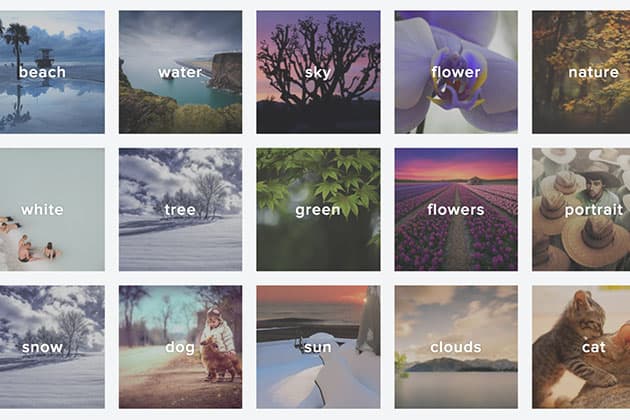April 20th – a date to fear? Adolf Hitler is born in 1889; my sister Jennifer embarks on an ultimately disastrous marriage in 1990. Or a date to cheer? Best known for his role as USS Enterprise helmsman Hikaru Sulu, actor George Takei is born in 1937; and Barbra Streisand records We’ve Only Just Begun in 1971.
April 20th: family-owned photo-sharing platform SmugMug purchases Flickr in 2018. Do I fear or cheer the announcement? I joined Flickr in 2009. I joined it again in February 2010, July 2010 and in 2015. I could never remember my Yahoo login details. My myriad accounts remained in limbo. My profile picture a floating head up in the cloud.
Founded in 2004, Flickr played a core role in the cultural and social life of the internet. Friendships developed as people shared photographs and others responded to them. Flickr was sold a year later to Yahoo for around $35 million. Yahoo retired its own photo service, Yahoo Photos, and made Flickr the jewel in the crown. Innovation at Flickr stuttered under the Yahoo umbrella. With the rise of Facebook and Instagram and the smartphone era, Flickr was slow to adapt and millions defected. However, Facebook and Instagram have their flaws. Consumers have become better informed about the use of their data. Many now see it as an asset they don’t want to give up for free. Is it time for Flickr to reignite?
I put in a request to speak to CEO of SmugMug Dan MacAskill, but as you can appreciate, for someone who has just overseen one of the biggest data transfers since Cambridge Analytica logged on to Facebook, he is quite busy – he did release this statement though: ‘Since day one our passion has been empowering photographers to tell the stories they want to tell, the way they want to tell them, and our investment in Flickr reaffirms this commitment. Uniting the SmugMug and Flickr brands will make the whole photography community stronger and better connected. The enduring quality of photography is so much more than clicks and likes – photography has the power to change the world. Together, we can preserve photography as the global language of storytelling.’
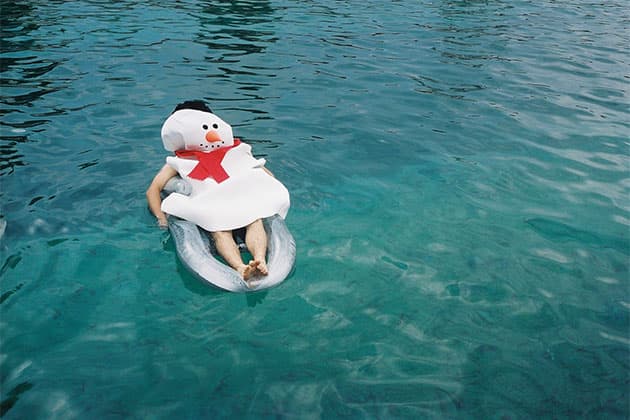
Image by Kevin Meredith, who still likes the search functionality of Flickr
The majority of Flickr users have free accounts that run advertising alongside photos. Flickr also offers an ad-free Pro service for $49.99 (£38) a year for unlimited storage. Hearing the encouraging murmurs of a Flickr revolution and that Yahoo logins had been dumped, I manage to access my 2015 account. I upload over 600 of my best photos and sit back feeling smug. A week later I’ve accumulated 26 followers. Romany WG has 15.4k followers and only 36 photos. Thomas Hawk a whopping 52.4k followers and 163,375 photos – I don’t think I’ve taken that many photos in my 21-year career, certainly not that many good ones. Kirsty Mitchell has 20.5k followers and 369 photos. The Volkswagen Ambulance Flickr group asks if it can include one of my images. I sit back feeling a mug.
There seems to be no pattern for success on Flickr. I have no understanding of what success would be. What is the purpose of the platform? What are its benefits? How often should I upload? What should I upload? Who should I engage with? How should I use tags? What groups should I join? Should I care and just stick to Instagram and Facebook? How do I get noticed? Why do I want to get noticed?
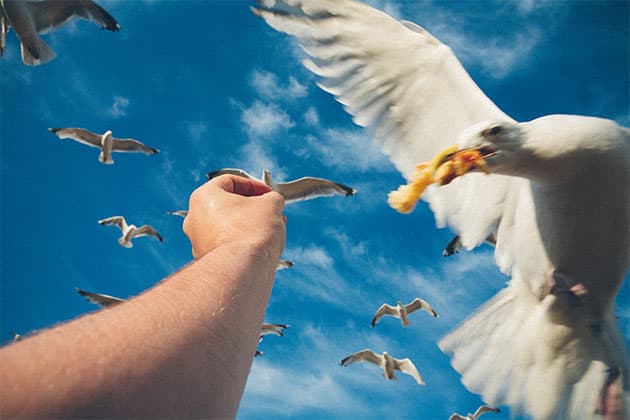
Credit: Kevin Meredith
Glory years
Miss Aniela got noticed. Her Flickr account may no longer be active but the fabled testimonials remain: drshrinker (catching up) says: ‘The word nonpareil zips to mind. As does the hackneyed genius. Neither of which could possibly be more fitting. Nor would they sufficiently do this proper miracle of an image maker justice.’
Zest of the loganberry says: ‘Miss Aniela is obviously a huge inspiration to a massive chunk of the Flickr community, including myself. Not only does she come up with beautiful, unique images again and again, she also provides amazing workshops and advice to developing photographers all around the globe.’
Li Gao says: ‘I just saw her Flicker (sic) and my jaw DROPPED. her work is so unique and powerful and SPEAKS! take a look for yourself and be inspired, like I did.’
The cascade of adulatory comments goes on and so has the career of Miss Aniela, twice-named Saatchi’s ‘One to Watch.’ Maybe this is what Flickr should be, a springboard for success. A positive and inspiring community of curated photography by passionate photographers away from the Twitter trolls, Instagram in uencers and Facebook boasters.
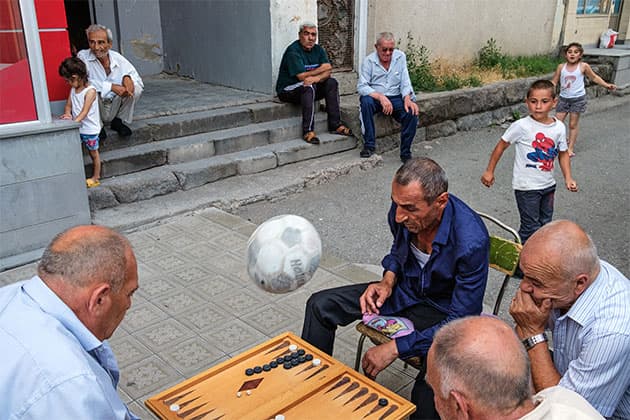
Picture by Maciej Dakowicz, an early advocate of the platform
I had questions and I wanted answers. As MacAskill wouldn’t talk to me I talked instead to Kevin Meredith, aka Lomokev, a British photographer and author known for his use of the Lomo LC-A camera and his Lomographic style. Based in Brighton, he has produced three books on photography: Hot Shots, 52 Photographic Projects and Toy Cameras, Creative Photos. Kevin is a guru.
‘I really do like to use Flickr as an archive as the search features are second to none. If looking for an old photo, I will always look for it on Flickr first rather than my own local hard drive,’ good point Kev. ‘Flickr is also a great way of seeing all the details in an image, especially when being on a desktop computer. I’ve got a 4K monitor and images fill the screen on Flickr in compression. Instagram is like looking at a postage stamp,’ another good point Kev. ‘Flickr feels like it’s for people interested in photography. The upside of that is there a not a lot of “influencers” on there, rather people taking photos of what’s in front of them than turning the camera on themselves. This becomes apparent when searching – if you search for “Brighton” on Flickr, you get pictures of Brighton, a somewhat postcard representation of the place, but if I do the same thing on Instagram, the top posts tend to be of influencers posing somewhere in Brighton, even if it’s their Airbnb or their food.’ Kev for President!
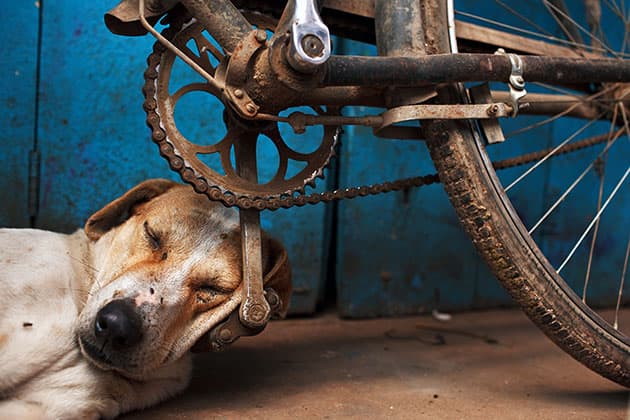
Credit: Maciej Dacowicz
Early advocates
Award-winning street photographer Maciej Dakowicz was an early advocate of Flickr, yet his enthusiasm has since waned. I asked him why. ‘I joined Flickr in 2005 and it was very modern and fresh, much better than any other photo-sharing platforms. Before, my main photo platforms were TrekEarth and PBase, but when Flickr arrived everyone moved there. There was a group called Hardcore Street Photography (HCSP) and it became the hub of the internet’s street photography “revival” around 2010, that’s where John Maloof asked what to do with his newly bought negatives of this unknown photographer called Vivian Maier in 2009 (www.flickr.com/groups/94761711@N00/discuss/72157622552378986/).
‘The group still exists although it’s not so important any more. There were other groups, some very active with thousands of members. I remember a popular one run by Lonely Planet, I actually won a couple of guidebooks. Many editors from various media used it for scouting for photos and I made quite a few sales through the platform, with my photos landing in various magazines and on several book covers. I think the main issue with Flickr and a reason it never properly took off, is that very few well-known photographers joined it. Somehow they thought it was not cool for them to share photos there, while it is completely cool for them now to share photos on Instagram. I remember Martin Parr joined Flickr and participated in some discussions in HCSP but he never posted any photos. Another issue is the Explore page (www.flickr.com/explore) that is supposed to showcase the best recent photos, but which is simply horrible. The algorithm for selecting photos for it is completely random and each time I open this page it makes me want to quit. Flickr should have invested some money into developing a better algorithm or employing some editors to curate the page properly.’ Maciej for Vice President!
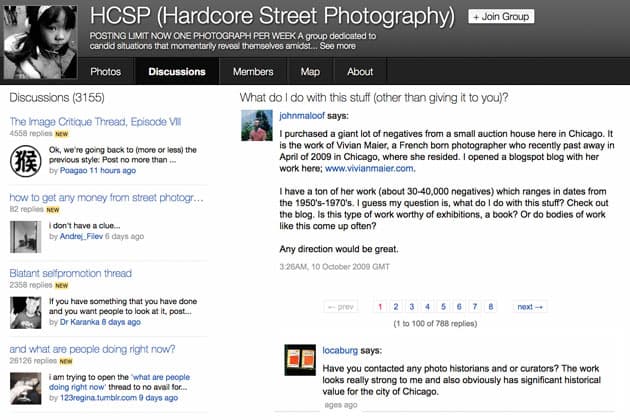
The Flickr group Hardcore Street Photography (HCSP)
Overwhelming
You can see a different picture by a different photographer every second of the year on Flickr. It can be overwhelming, like living in any community. Decide what you want to get out of it before you join it, once you do join it, be proactive. Photographs to many are more personal than words. It’s important to find a safe home for them where they can be cherished and shared. Where photographers are treated as a priority and empowered to tell the stories they want to tell. A utopian place for photographers by photographers. All things considered, there are worse places to visit than planet Flickr…
Or so I thought.
On 19 December 2019, Dan MacAskill released a candid open plea, which read ‘The world’s most-beloved, money-losing business needs your help’. The revealing statement admits Flickr is still far from profitable and appeals to photographers to sign up to Flickr Pro. ‘Please, help us make Flickr thrive. Help us ensure it has a bright future,’ implores MacAskill. It seems that planet Flickr may yet be sucked into the black hole of history, along with billions of images.
Editor’s note: Amateur Photographer also contacted Flickr for input on this piece, but it declined to comment.

